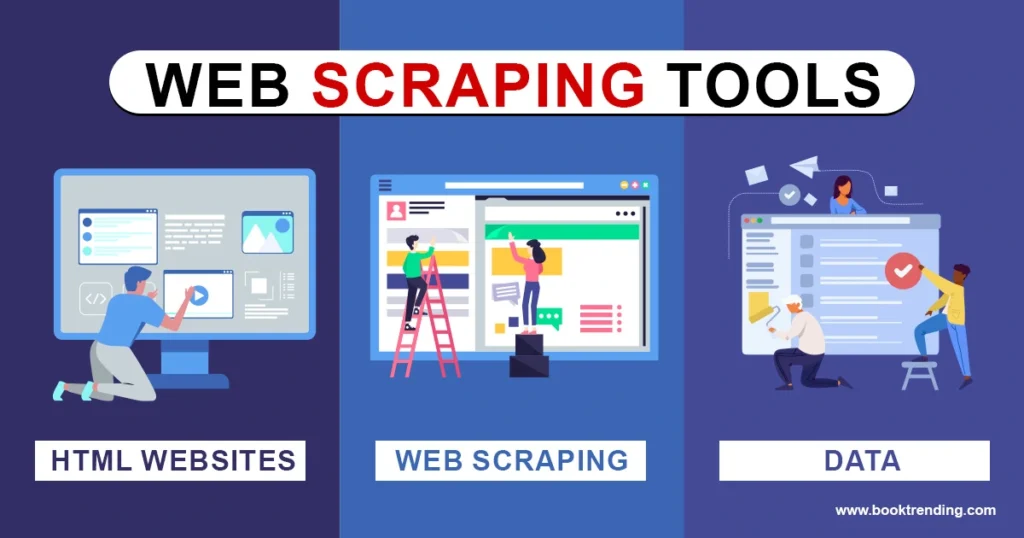
In today’s data-driven world, businesses, researchers, and developers are constantly seeking ways to extract valuable information from the vast resources available on the web. This is where web scraping tools come into play, offering an efficient way to collect, process, and analyze data from various online sources. Whether you’re looking to gather product prices, customer reviews, or industry trends, web scraping tools can streamline the entire process.
In this blog, we’ll explore some of the best web scraping tools that help extract data from anywhere, how they work, and what makes them stand out.
What is Web Scraping?
Before diving into the best tools, it’s important to understand what web scraping is. Web scraping involves the automated extraction of data from websites. It is commonly used for a variety of purposes, including price comparison, market research, SEO monitoring, and lead generation.
Instead of manually copying and pasting information, web scraping automates the process using specialized tools or bots that crawl the internet, extract structured data, and store it in a usable format like a spreadsheet or database.
Key Features of Web Scraping Tools
When selecting a web scraping tool, there are several important features to consider:
- Ease of Use: Some tools are designed for non-technical users, offering a user-friendly interface, while others require coding skills.
- Speed and Efficiency: Fast data extraction is crucial when dealing with large datasets or frequent updates.
- Customization: The ability to set specific scraping parameters or customize data fields is a valuable feature for users with unique requirements.
- Data Export Options: Tools should offer flexibility in exporting scraped data into various formats like CSV, JSON, or Excel.
Now that we know what to look for, let’s explore some of the best web scraping tools available in the market.
1. Scrapy
Scrapy is one of the most popular web scraping frameworks, widely used by developers and data scientists. Written in Python, Scrapy allows you to extract data, process it, and store it in the desired format efficiently. It is highly customizable, offering extensive libraries and middleware options that make it adaptable to a variety of web scraping needs.
Key Features:
- Open-source and free to use.
- Supports asynchronous requests, making it fast and efficient.
- Can handle large-scale scraping projects.
- Built-in support for exporting data in formats like JSON, CSV, and XML.
Best For: Developers with Python experience who need a highly customizable scraping solution.
2. Octoparse
Octoparse is a no-code web scraping tool designed for non-technical users. It provides an intuitive drag-and-drop interface, allowing users to build scraping tasks without writing any code. Octoparse can handle both simple and complex scraping tasks, including data extraction from dynamic websites using AJAX and JavaScript.
Key Features:
- Cloud-based platform for scraping, storing, and scheduling tasks.
- No coding is required.
- Handles dynamic web pages.
- Offers built-in templates for common scraping tasks like scraping e-commerce sites.
Best For: Beginners or business users who need a powerful but easy-to-use web scraping tool.
3. ParseHub
ParseHub is another versatile web scraping tool that allows you to scrape data from dynamic websites, including those built with AJAX or JavaScript. With a visual interface, users can click and select the data they want to scrape, making it ideal for non-programmers. ParseHub is also capable of handling multiple pages and search results automatically.
Key Features:
- Visual interface with no coding required.
- Can scrape data from websites with dynamic content.
- Allows exporting data in formats like Excel, CSV, or JSON.
- Offers a free tier for light usage.
Best For Users who need to scrape data from complex, dynamic websites without writing code.
4. BeautifulSoup
BeautifulSoup is a Python library used for parsing HTML and XML documents. It works best in combination with other libraries like requests, making it a lightweight option for small-scale scraping projects. BeautifulSoup is particularly useful for extracting specific parts of a webpage, like headings, paragraphs, or table data.
Key Features:
- Simple to use for small-scale projects.
- Integrates well with other Python libraries.
- Supports scraping from HTML and XML files.
- Provides easy navigation of parse trees.
Best For: Python developers who need a lightweight and simple solution for small projects.
5. WebHarvy
WebHarvy is a point-and-click web scraping software that automatically identifies patterns in the data you wish to scrape. This eliminates the need to write any code or scripts. WebHarvy is user-friendly and can be used to scrape images, text, URLs, and more from websites.
Key Features:
- Visual scraper with no coding needed.
- Automatically detects data patterns.
- Can scrape images, text, and other elements.
- Supports export to multiple formats.
Best For: Non-technical users who need an automated tool to detect data patterns.
Conclusion
Choosing the right web scraping tool depends largely on your needs and level of expertise. Tools like Scrapy and BeautifulSoup are best for developers who require high customization, while no-code solutions like Octoparse and WebHarvy are ideal for business users who prefer ease of use. Whether you’re working with simple or complex websites, these tools can help you collect the data you need quickly and efficiently.
By leveraging the right web scraping tools, you can gain valuable insights, make data-driven decisions, and stay competitive in your industry.



